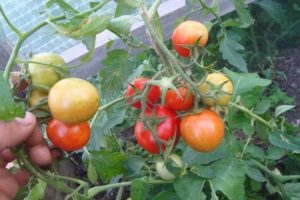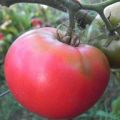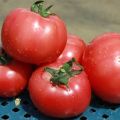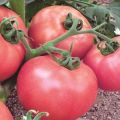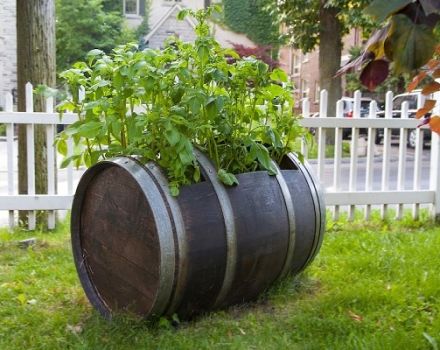Characteristics and description of the Pink Paradise tomato variety, its yield
The best salad varieties are traditionally pink tomatoes. They have a very delicate, sweet taste. The line of popular Russian varieties was supplemented by Pink tomato, a selection of the Japanese company “Sakata”, which is known for its high quality vegetable crops.
Excellent taste and market characteristics attracted the attention of not only gardeners, but also owners of greenhouses and farms. The name of the hybrid is very promising "Pink Paradise" or "Pink Paradise". According to reviews, "overseas tomato" fully lives up to its beautiful name.
Important! Seedlings of hybrids prone to vegetative growth are recommended to be planted in a greenhouse with flowering first and second brushes in order to prevent "fattening" of plants.
Description of tomato "Pink Paradise F1"
Hybrids have several advantages over varietal vegetables. They are resistant to diseases, give a consistently high yield, have an attractive fruit shape. These qualities are especially important when using the crop for commercial purposes. But the seeds of such crops are more expensive and do not pass on their qualities to future generations.
When choosing a tomato, it is best to consistently follow the recommendations of the seed manufacturer. After all, conditions are rarely ideal, and the harvest always wants to grow as large as possible.
Characteristics and description of the variety:
- the tomato belongs to the first generation hybrids by origin;
- the variety is mid-season, with ripening periods of 110-115 days from germination, recommended for growing under film shelters, in greenhouses of any type;
- bush of indeterminate type, powerful, well leafy, reaches a height of 2 meters during the growing season;
- fruits are round, smooth, have slight ribbing at the base, weighing 220-240 g, yield 4-6 kg per plant;
- the fruit is four-chambered, the pulp is dense, juicy, the taste is excellent, the color is pink;
- tomatoes do not crack when overgrown, they are well stored and tolerate transportation;
- suitable for preparing summer salads, various types of tomato preparations;
- another positive characteristic is the ability of fruits to ripen at home, without losing consumer qualities;
- tomato variety Pink Paradise is resistant to gray and brown leaf spot, to various types of root nematodes, to verticillium and fusarium wilt, to tobacco mosaic virus.

The main advantage of Pink Paradise tomatoes is excellent taste and beautiful fruit shape. With the high price of seed, many homeowners leave positive reviews. They believe that tomatoes are worth so much money and labor.The fact is that plants with unlimited growth require additional efforts to timely remove stepchildren and form the height of the bush.
Important! An increase in the concentration of carbon dioxide in the greenhouse (a barrel of manure) promotes better fruit setting, an increase in their average weight.
Agricultural technology and care
The cultivation of Pink Paradise tomatoes does not have any special requirements. In some stages, growers have simplified farming techniques by creating additional protection for growing tomatoes. This concerns the hybrid's ability to withstand a variety of diseases. These qualities are especially important when growing tomatoes in a greenhouse.
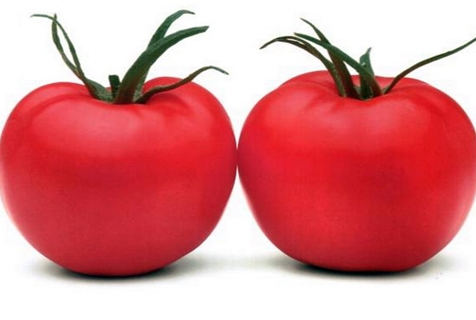
- The contact fungicide “tiram” was used to protect the seeds. This means that there is no need for disinfection and any preparation of seed material before germination. Planting seeds for seedlings occurs 55-60 days before the date of planting in the greenhouse.
- At the initial stage, it is important to prevent the seedlings from pulling out by providing them with sufficient lighting. The picking of seedlings is carried out at the stage of 2 true leaves. Observing temperature, light and water regimes, feeding every 10-15 days, they form strong, stocky seedlings.
- A good quality seedling should have 9-10 leaves under the first flower cluster. The length of the internodes is 5-7 cm. The flower brush must be of the correct shape.
- Plants are planted in a permanent place at the rate of 3-4 bushes per 1 sq. m. Without fail, the stem is attached to a support or trellis, and as the fruit grows, the brushes themselves are tied up.
- The hybrid is grown in one stem, removing all lateral shoots, yellow leaves. After the formation of 5-6 full-fledged brushes, the growth point is limited. The result may vary for plants grown in 2-3 stems. Under favorable climatic conditions, the yield will be higher, but the ripening time of tomatoes will be postponed by a couple of weeks.
- Tomatoes are fed every 10-15 days, depending on the stage of development and condition of the plant. Nitrogen is not used on the first two clusters until the fruit sets in order to avoid excessive green mass growth. During the growth of fruits, fertilizers are selected containing nitrogen, phosphorus and potassium in equal proportions. In the last stages of tomato ripening, the proportion of potassium is increased to improve the quality of the fruit.
- The variety is responsive to care. According to the testimony of gardeners, plants grown in a greenhouse, film and glass greenhouses give a significantly higher yield. Tomatoes are larger in comparison to tomatoes grown outdoors. The difference in fruit size can be seen at different stages of growth. The first two clusters form the tomatoes with the maximum weight. On subsequent levels, the fruits are slightly smaller.
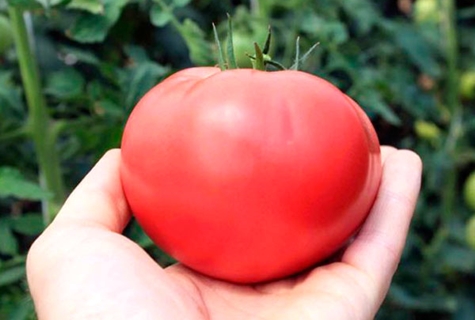
The hybrid is considered a favorite and a kind of standard among pink tomatoes for salad purposes. This is evidenced by a detailed analysis of the market and the ever-increasing demand for planting material. The tomato is successfully grown in the southern regions and in the middle climatic zone of Russia. He is a welcome guest on backyards and industrial greenhouse complexes.

